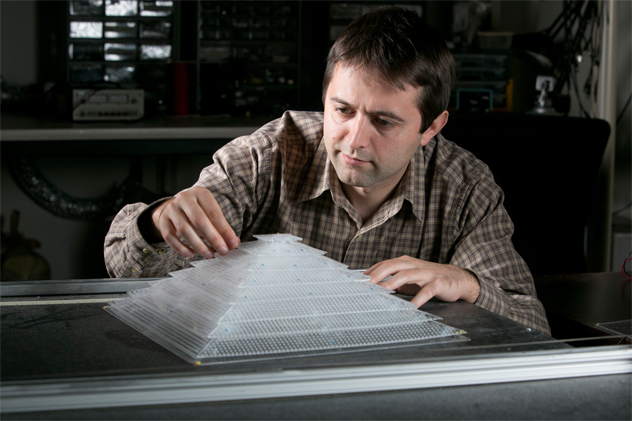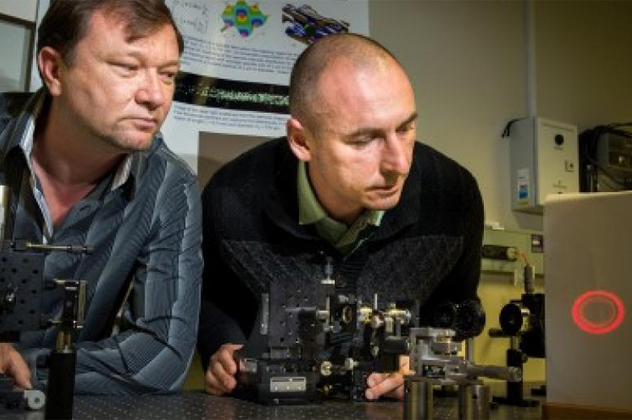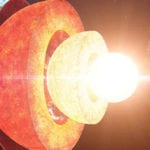 Technology
Technology  Technology
Technology  Humans
Humans 10 Everyday Human Behaviors That Are Actually Survival Instincts
 Animals
Animals 10 Animals That Humiliated and Harmed Historical Leaders
 History
History 10 Most Influential Protests in Modern History
 Creepy
Creepy 10 More Representations of Death from Myth, Legend, and Folktale
 Technology
Technology 10 Scientific Breakthroughs of 2025 That’ll Change Everything
 Our World
Our World 10 Ways Icelandic Culture Makes Other Countries Look Boring
 Misconceptions
Misconceptions 10 Common Misconceptions About the Victorian Era
 Mysteries
Mysteries 10 Strange Unexplained Mysteries of 2025
 Miscellaneous
Miscellaneous 10 of History’s Most Bell-Ringing Finishing Moves
 Technology
Technology Top 10 Everyday Tech Buzzwords That Hide a Darker Past
 Humans
Humans 10 Everyday Human Behaviors That Are Actually Survival Instincts
 Animals
Animals 10 Animals That Humiliated and Harmed Historical Leaders
Who's Behind Listverse?

Jamie Frater
Head Editor
Jamie founded Listverse due to an insatiable desire to share fascinating, obscure, and bizarre facts. He has been a guest speaker on numerous national radio and television stations and is a five time published author.
More About Us History
History 10 Most Influential Protests in Modern History
 Creepy
Creepy 10 More Representations of Death from Myth, Legend, and Folktale
 Technology
Technology 10 Scientific Breakthroughs of 2025 That’ll Change Everything
 Our World
Our World 10 Ways Icelandic Culture Makes Other Countries Look Boring
 Misconceptions
Misconceptions 10 Common Misconceptions About the Victorian Era
 Mysteries
Mysteries 10 Strange Unexplained Mysteries of 2025
 Miscellaneous
Miscellaneous 10 of History’s Most Bell-Ringing Finishing Moves
10 Of The Most Incredible Things Science Is Doing With Sound
When we think of the future of technology, we often overlook a field that is making incredible advances—acoustics. Sound is proving to be one of the fundamental building blocks of the future. Science is using it to do more cool stuff than ever, and in the coming years we’re sure to be hearing about it a lot more.
10Refrigeration

A team of researchers at Penn State University, sponsored by Ben and Jerry’s, has made a refrigerator that chills food with sound. It works on the principle that sound waves compress and expand the air around them, which heats and cools the air respectively. Normally, sound waves affect temperatures no more than 1/10,000 of a degree, but far larger effects can be had by placing the gas inside the fridge under far greater pressure—about 10 atmospheres worth. The thermoacoustic freezer, as it’s called, pressurizes the gas inside its cooling chamber and blasts it with more than 173 decibels of sound, generating heat. Inside, a series of metal plates within the path of the sound waves absorbs the heat and delivers it to a heat exchanger system. The heat is removed and the contents of the fridge are chilled.
The system was developed as a more environmentally friendly alternative to traditional refrigerators. Unlike traditional models, which use chemical refrigerants that damage the atmosphere, the thermoacoustic refrigerator works very well with inert gases like helium. Since helium will just leak out of the atmosphere if it escapes, it makes the new technology far greener than anything currently on the market. As the science advances, its designers hope that thermoacoustic models will eventually outstrip conventional refrigerators in terms of reliability since they have fewer moving parts to break down.
9Ultrasonic Welding

Ultrasonic waves have been used to weld plastics together since the 1960s. It works by compressing two thermoplastic materials together on top of an anvil. Ultrasonic waves are then fed through a horn that vibrates their molecules, causing friction that causes heat. The end result is two pieces melted together very evenly and strongly.
Like many technologies, it was discovered by accident. Robert Soloff had been working on ultrasonic film-sealing technology when the probe he was holding accidentally touched a Scotch tape dispenser on his desk. The accident welded the dispenser’s two halves together, which made him realize that sound waves could travel along the corners and sides of rigid plastics to reach joints. Upon his discovery, Soloff and his colleagues developed and patented what they called the ultrasonic staking method.
Since then, ultrasonic welding has found widespread use in many industries. From diapers to cars, the technology is used everywhere plastics need to be bonded together. Recently, the US Navy has begun experimenting with using it to make “welded seams” for its uniforms. As long as the clothing’s material is a thermoplastic like nylon, ultrasonic welding can be used to make seams that are stronger, lighter, and more insulating than traditionally sewn ones.
But while clothing companies like Patagonia and Northface are already using welded seams in their clothing lines, its military use is still only experimental. The technology is typically used for straight seams, not ones that turn corners. And it’s expensive. For now, the cheapest and most versatile method is still hand-sewing.
8Stealing Credit Card Info

Researchers have found a way to transmit data from computer to computer using sound alone. Unfortunately, they’re worried because it’s a very effective way to transmit viruses.
Security consultant Dragos Ruiu came up with the idea after noticing something strange about his MAcBook Air: After installing OS X, his computer updated its booting firmware spontaneously. It had a very powerful virus that wouldn’t permit a CD-ROM boot, could delete data, and could make changes at will. Even after erasing, reinstalling, and reconfiguring the entire system, the problem still remained. The most plausible theory for the virus’s seeming immortality was that it resided in the basic input/output system (BIOS), which would allow it to remain despite removal attempts. The other, improbable one, was that it was using high-frequency transmissions passed between speakers and microphones to transmit data.
The strange theory is fairly unlikely, but it was proven at least possible when a German institute found a way to reproduce the effect. Based on software developed for underwater communication, they developed a malware prototype that sent data across non-networked laptops using just their speakers. In tests, laptops could communicate from as far as 20 meters (65 ft) away. The range could be extended further by linking infected devices together into a network, similar to Wi-Fi repeaters.
The good news is that acoustic transmission is extremely slow, reaching only 20 bits per second. While that’s not enough to transfer large packages, it is enough to send bursts of information like keystrokes, passwords, credit card numbers, and encryption keys. Since current malware can already do all that faster and better, it’s unlikely that a new acoustic threat will surface anytime soon.
7Acoustic Scalpels

Doctors already use sound waves for medical procedures like ultrasounds and breaking apart kidney stones, but researchers at the University of Michigan have made an acoustic scalpel so fine it can accurately detach a single cell. Current focused ultrasound technology can only create a beam that has a focal spot of around several millimeters, but their new instrument has an accuracy of 75 x 400 micrometers.
The general technology has been around since the late 1800s, but the new scalpel was made possible by using a lens coated in carbon nanotubes and a material called polydimethysiloxane to convert light into high-pressure sound waves. Focused tightly enough, the sound waves create shock waves and microbubbles that exert pressure at a microscopic level. It’s already been tested by detaching a single ovarian cancer cell and drilling a 150-micrometer hole in an artificial kidney stone. The designers hope it can eventually be used to deliver drugs or to eliminate small cancer tumors or plaques. It may even be able to perform those operations painlessly since the beam is so fine that it can avoid nerve cells.
6Charge Your Cell Phone With Your Voice

Researchers are using nanotechnology to harvest energy from a variety of sources to generate electricity. One of their goals is creating devices that don’t need to be charged. Nokia in particular has even patented a device that harvests energy from movement.
And since sound is only compressing and expanding the gases in air, which is movement, that makes it a viable energy source. Researchers are experimenting with ways you can charge your cell phone simply by using it—as long as you’re using it to make a call. In 2011, researchers in Seoul used nano-rods of zinc oxide sandwiched between two electrodes to generate electricity from sound waves. The technology was able to generate 50 millivolts from the volume of noisy traffic. That isn’t enough to charge most electrical devices, but last year, London engineers managed to create a device that can produce 5 volts—enough to charge a phone.
While charging cell phones with sound is good news for big talkers, it’s also going to have an impact on the developing world. The same thermoacoustic technology that made the refrigerator can also be used to convert sound into electricity. The Score-Stove is a cooker and fridge that leaches the energy used from cooking with biomass fuels to produce small amounts of electricity, around 150 watts. That’s not a lot, but it’s enough to provide limited power to the 1.3 billion people on Earth with no access to electricity.
5Turning The Human Body Into A Microphone

Researchers at Disney have made a device that turns the human body into a microphone. Called the “Ishin-Den-Shin” after the Japanese expression for communicating through unspoken mutual understanding, it allows someone to wordlessly pass along a recorded message just by touching another person’s ear.
The device they’ve made includes a microphone attached to a computer. When someone speaks into the microphone, the computer stores it as a looped recording, which is then converted into an inaudible signal that is transmitted though a wire connected to the mic. The signal transfers from the mic to the body of anyone holding it, which produces a modulated electrostatic field that causes a tiny vibration if the person touches anything. The vibration can be heard if the person touches someone else’s ear. It can even be transferred from person to person to person if the group is in physical contact.
4Spying

Sometimes, science creates something that even James Bond could only dream of. Researchers at MIT, Microsoft, and Adobe have developed an algorithm that can read passive sounds from inanimate objects in video. Their algorithm analyzes the imperceptible vibrations which sound waves make on surfaces and makes them audible. One experiment recovered intelligible speech from a bag of potato chips recorded 4.5 meters (15 ft) away though soundproof glass.
For best results, the algorithm requires the video’s frames per second to be higher than the frequency of the audio signal, which requires a high-speed camera. For lesser results, it can also be used with an ordinary digital camera to identify things like the number of speakers in a room and their gender—possibly even their identities. The new technology has obvious uses for forensics, law enforcement, and spy wars. With this new technology, all someone needs to do is point a high-speed digital camera into the window to be able to record whatever is happening inside.
3Acoustic Cloaking

Researchers have made a device that can hide objects from sound. It looks like a bizarre pyramid full of holes, but the shape alters the trajectory of sound waves to match what they would look like had they reflected off a flat surface. If you place the acoustic cloak over an object on a flat surface, it disappears from sound no matter which angle you observe it from.
While it may not be able to prevent anyone from eavesdropping on a conversation from the outside, it can mask objects in places where acoustics are important, like concert halls. Since the research was carried out with grants from the US military, though, they probably have their eye on something bigger. It doesn’t keep sound in, but it has the potential to hide objects from sound-based detection systems like sonar. Since sound travels underwater in a similar manner as through air, acoustic cloaking could eventually render submarines invisible to detection.
2Tractor Beams

For years, scientists have been trying to bring technology from Star Trek to life, not the least of which is the tractor beam. While a lot of research is focusing on optical tractor beams that use heat to move objects, that technology has been restricted to items only a fraction of a millimeter in width. Ultrasonic tractor beams, however, are proving that they can move larger objects—about the size of 1 centimeter (.4 in). That might still sound small, but the new beam has a billion times more force than previous models.
By focusing two ultrasonic beams on a target, an object can be pulled toward the source of the beam by bouncing the waves off it and scattering them in opposite directions. Although the scientists were not able to create the best kind of wave for their technique (called a “Bessel beam”), they were still able to approximate it enough to make a working tractor beam. In the future, the technology could be used to direct objects and fluid in the body. It would prove a huge boon to the field of medicine if it starts being used to deliver drugs to the exact location where they are needed. Sadly for Star Trek fans, though, sound cannot travel in the vacuum of space, so it won’t be rescuing any ships in distress.
1Haptic Holograms

Science is also working on another piece of Star Trek technology—the holodeck. Although it’s not as sophisticated as in sci-fi flicks, hologram technology is nothing new. But one of the biggest hurdles to creating a working holodeck is that science hasn’t been able to replicate tactile sensations—until recently. Engineers at the University of Bristol are developing what they call UltraHaptics technology, which does just that.
Originally, the technology was developed to exert force on your skin when making gestures to control certain devices. A mechanic with dirty hands, for example, could use it to flip through a manual. It’s a bit like giving Amazon’s Kindle the sensation of turning a physical page.
Since the technology uses sound to produce vibrations that replicate the feeling of touch, the level of sensation can be modified. A 4-hertz vibration feels like heavy raindrops, for example, while 125 feels like you’re touching foam. For now the only drawback is that the frequencies can be heard by dogs, but the designers say they can fix that.
They’ve now advanced their device to produce virtual shapes like spheres and pyramids. There isn’t really a virtual shape being projected, though. Instead, it works by using sensors that follow your hand and fire off the sound waves appropriately. For now, the objects lack much detail and have some shape discrepancies, but the designers say that once the technology is matched with a visible hologram, the human brain will fit it to the overall image. They are hoping to use it in a range of products, from video games to devices that will let doctors physically examine an object in a CT scan.
Nathan keeps a Japan blog where he writes about the sights, expat life, and finds Japanese culture in everyday items. You can also find him on Facebook and Twitter.








